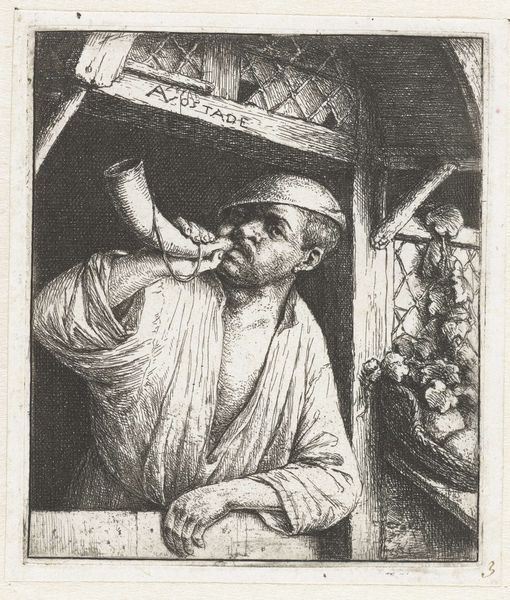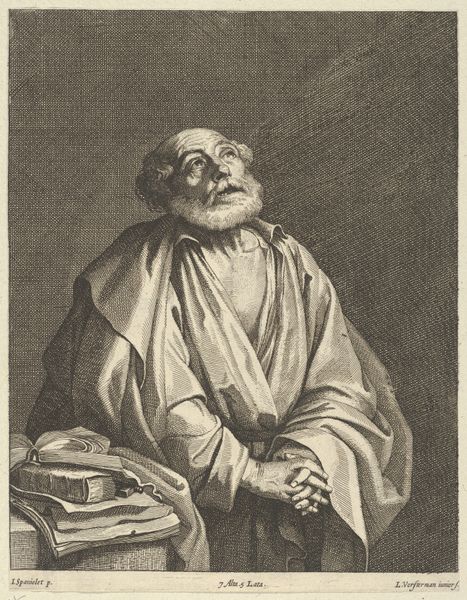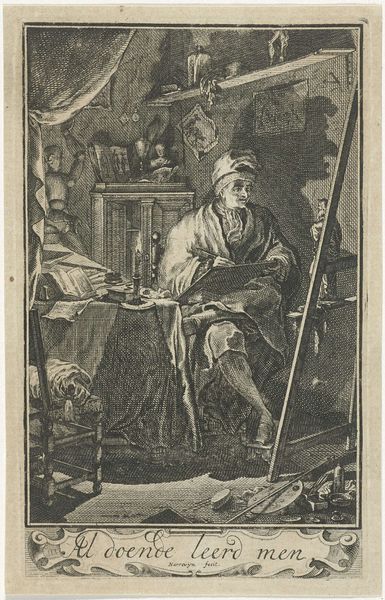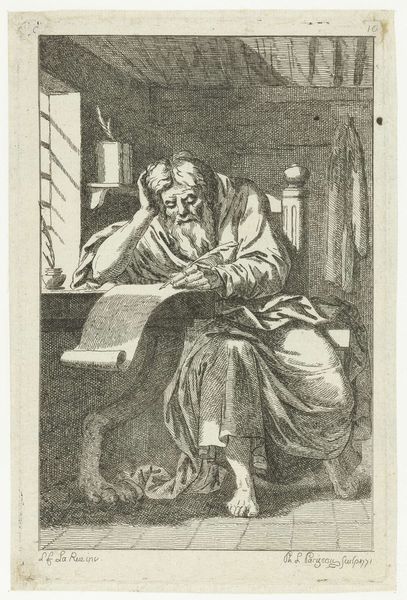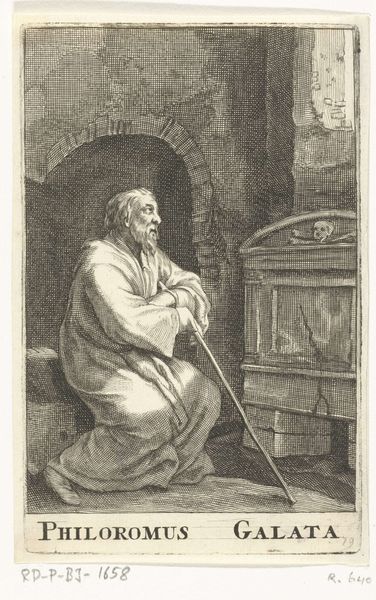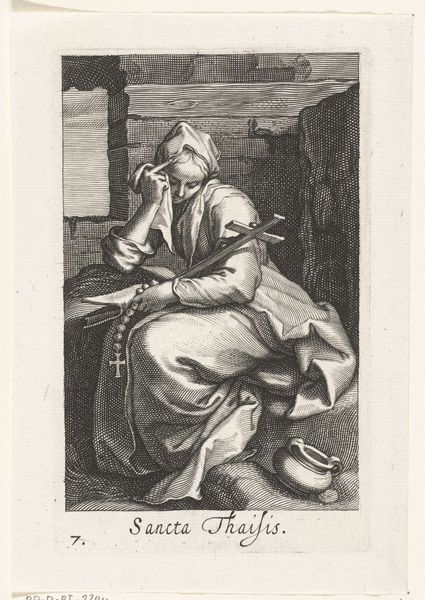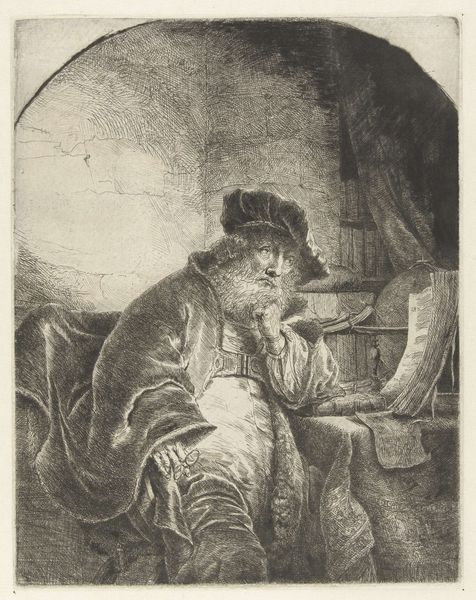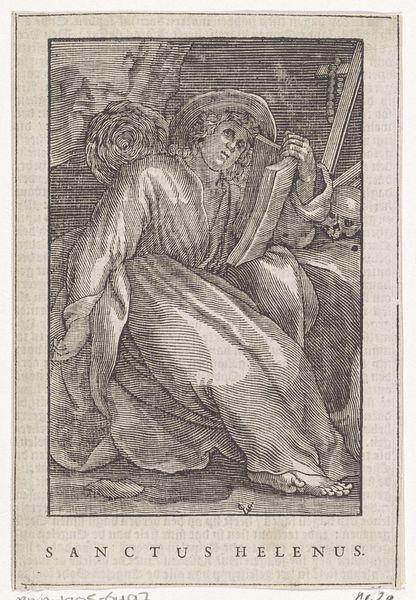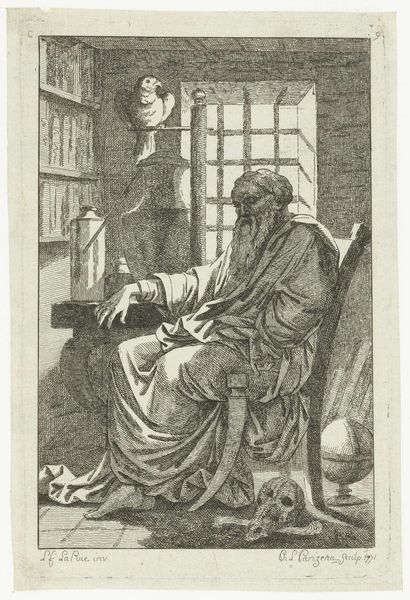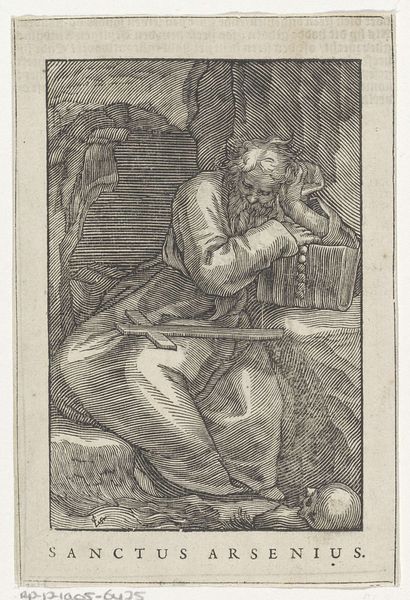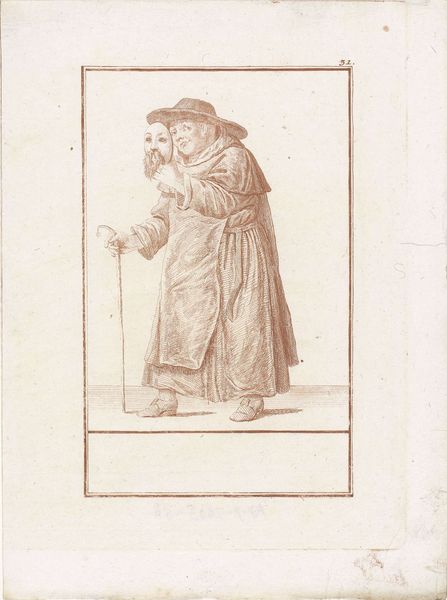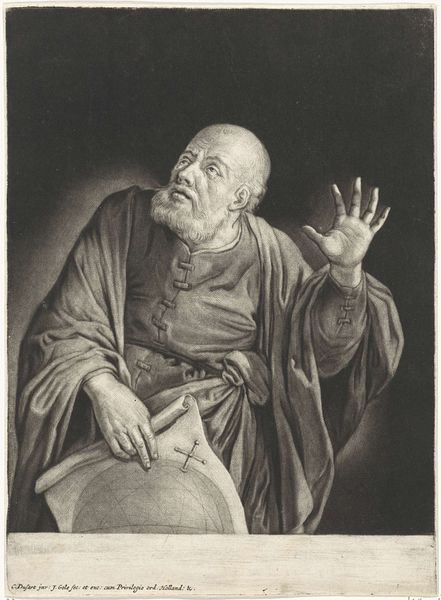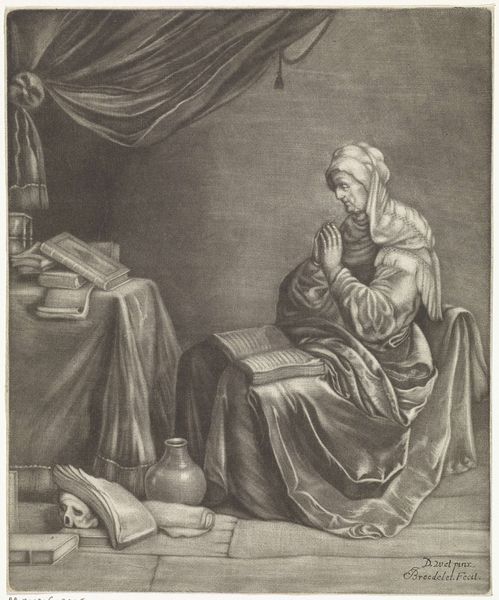
Bakker blaast op een hoorn in een deuropening Possibly 1646 - 1900
0:00
0:00
adriaenvanostade
Rijksmuseum
etching
#
portrait
#
dutch-golden-age
#
etching
#
old engraving style
#
charcoal drawing
#
figuration
#
pencil drawing
#
genre-painting
Dimensions: height 103 mm, width 88 mm, height 354 mm, width 262 mm
Copyright: Rijks Museum: Open Domain
Curator: Before us is Adriaen van Ostade’s etching, “Bakker blaast op een hoorn in een deuropening,” its creation falling somewhere between 1646 and 1900. Immediately, one feels the bleary cacophony. Editor: Cacophony is the precise word; the tight crop amplifying the baker’s raucous declaration. It feels, simultaneously, contained and explosively present. One is immediately aware of gender and class and how they mediate access to sonic space in early modern Europe. Curator: Note how Ostade employs etching to suggest depth and texture. The network of lines defining the baker’s features, his garment, the wooden frame—it’s all masterfully rendered. The window latticework in particular shows command. Editor: That latticework isn't merely decorative; it functions as a grid, further boxing in the subject. Here is an image of Dutch industriousness, the baker framed as a working-class man in an increasingly mercantile society where production became increasingly fragmented and classed. The baker’s horn disrupts this gridlock with what would surely have been noise pollution. Curator: An important point. And consider how the artist's name, elegantly inscribed above the door, becomes another layer of structural containment. His mastery of the burin has created an indelible representation. The light and shadow work wonders! Editor: That light feels mediated through a lens of power. Ostade, as an artist, chooses to represent this baker in this fashion, potentially reinforcing existing stereotypes of the working class as rowdy. To look is to participate in power structures, however unconsciously. What does it mean to consume an image that might solidify social divides? Curator: Perhaps instead, Ostade, capturing the spirited vitality of a common baker, simply reveals the diversity of everyday Dutch life. The subject’s gesture, even beyond class, celebrates humanity's simple, intrinsic pleasures: the act of sounding a horn. Editor: Possibly, yet we can also interpret that pleasure in a range of ways, particularly when contemplating whose pleasure this action caters to or detracts from. It challenges our modern notions of access, volume, and the social responsibilities attributed to public actions. Curator: It prompts reflection, at the very least, indeed. Thank you, truly, for your insight. Editor: It is imperative we continue posing critical inquiries of representation as we interpret this Dutch Golden Age image.
Comments
No comments
Be the first to comment and join the conversation on the ultimate creative platform.
